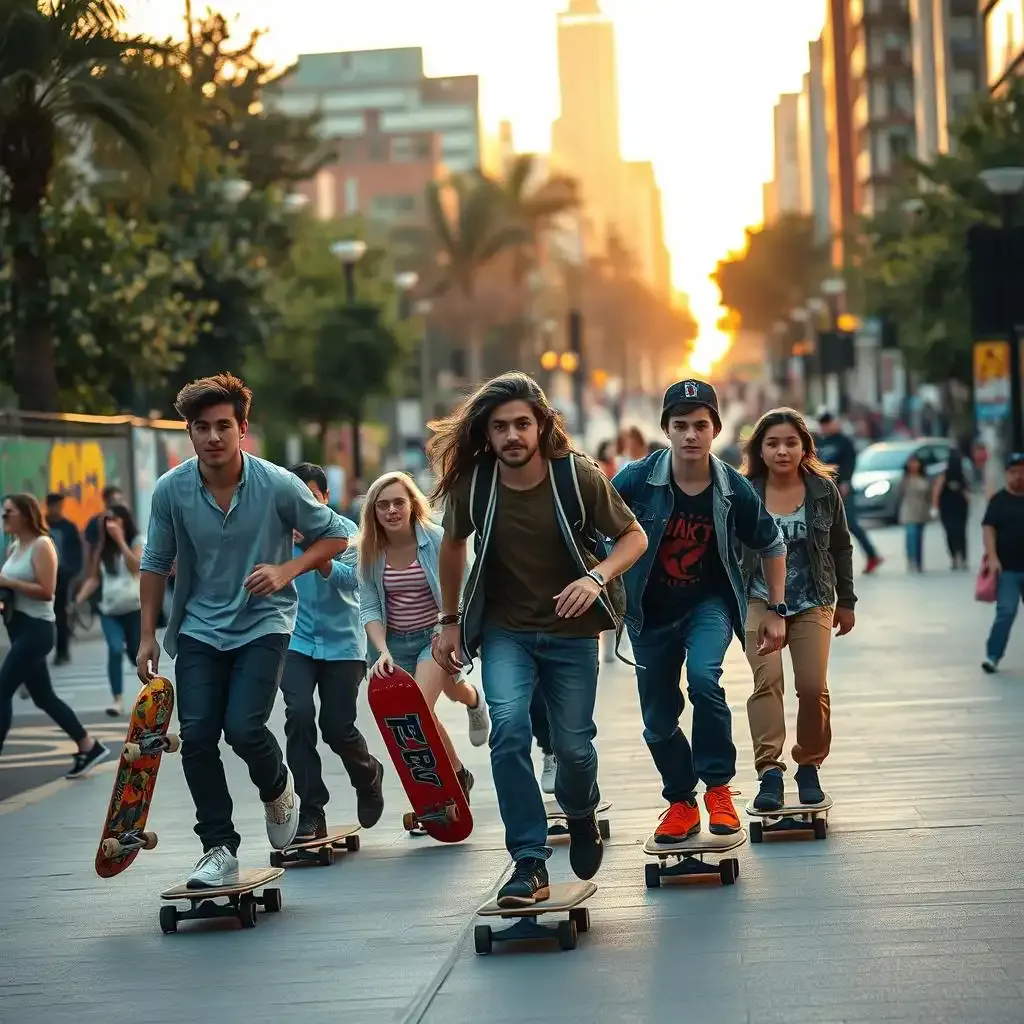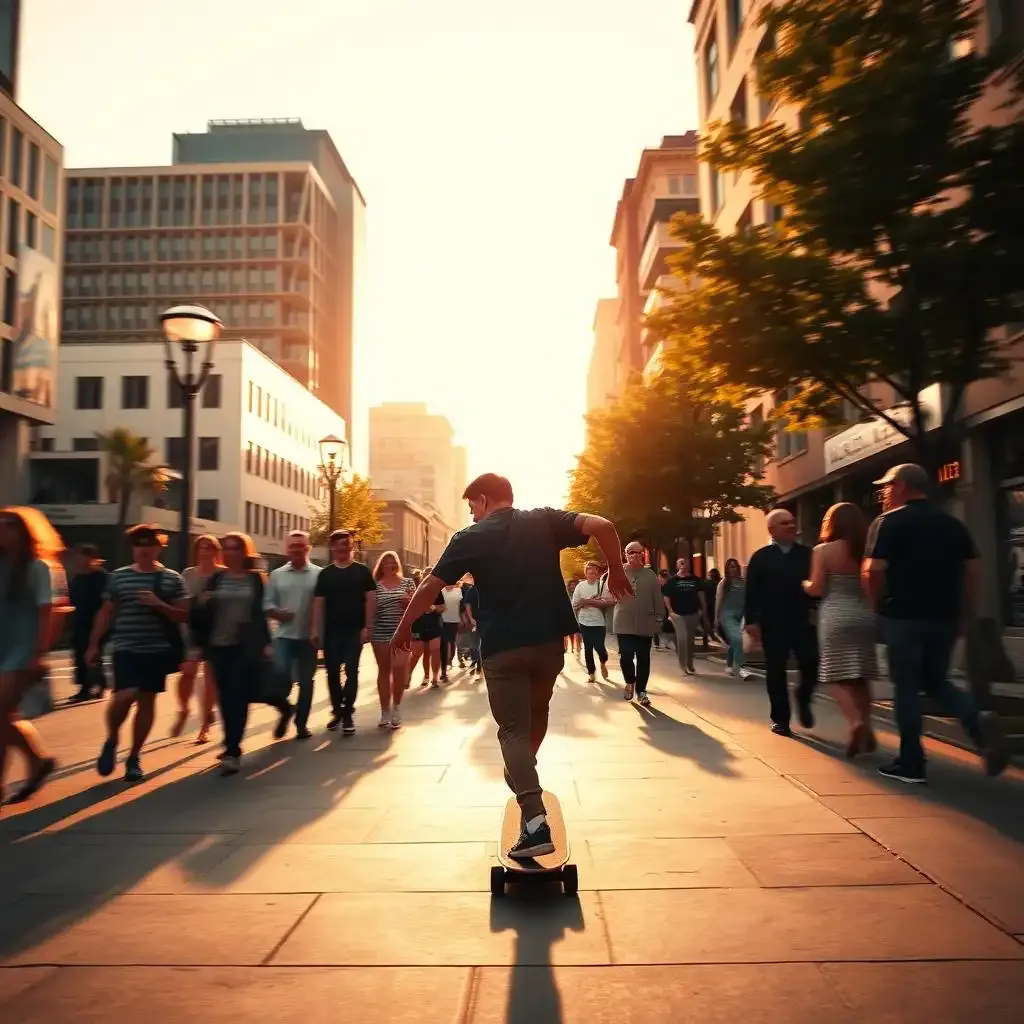Table of Contents
Ever watched someone glide by on a skateboard and wondered where they fit in the traffic scheme? are skateboarders considered pedestrians, or do they belong in the bike lane, or maybe even with cars? It's a question that might seem simple, but the answer has more layers than you might think. Across the United States, the general consensus leans towards classifying skateboarders as pedestrians. Think about it: a person on a skateboard isn't operating a vehicle in the traditional sense. They aren't strapped into a car, nor are they pedaling a bicycle. But are skateboarders considered pedestrians in every single situation? Let's roll into the details and unpack what this classification truly means for both skateboarders and those sharing the sidewalks and streets with them.
Key Point | Details |
|---|---|
General Classification | In most US states, skateboarders are considered pedestrians. |
California Example | The California DMV explicitly states skateboarders are pedestrians. |
Rights | Skateboarders generally have similar rights to pedestrians. |
License Requirement | No special license is needed to ride a skateboard. |
Driver Responsibility | Drivers should observe skateboarders as pedestrians. |
Sidewalk Etiquette | Skateboarders should dismount in heavy foot traffic. |
Exceptions Exist | The blanket statement "A person on a skateboard is a pedestrian" might not always be true. |
Are Skateboarders Considered Pedestrians? Understanding the Basics
So, you're diving into the world of skateboards and pedestrian laws, huh? It's a surprisingly twisty path! Think of it like this: imagine a sidewalk as a river. Pedestrians are like folks strolling along the bank, easy to spot and generally predictable. Now, toss in a skateboarder. Are they a boat, needing a whole different channel? Or are they more like someone wading in the shallows, still part of the pedestrian flow? In most US states, the law sees them more like the waders. The California DMV, for instance, pretty clearly states that if you're riding a skateboard, you're considered a pedestrian. It makes a certain amount of sense, right? You're not in a car, you're not on a bike, you're propelling yourself with your own two feet, just with a board attached. You don't need a license to hop on a skateboard, and generally, you've got similar rights to someone on foot. It's like the law is saying, "Okay, you've got wheels, but you're still playing in the pedestrian sandbox." But just like with any rule, there are, of course, some interesting exceptions we'll get to later. Speaking of getting around without a car, you might find our guide to onne skate interesting, it's another way people are zipping around these days.
When Are Skateboarders Not Considered Pedestrians? Exceptions and Nuances
When Are Skateboarders Not Considered Pedestrians Exceptions And Nuances
Navigating the Sidewalk: Are Skateboarders Considered Pedestrians and What Are Their Rights?
Navigating The Sidewalk Are Skateboarders Considered Pedestrians And What Are Their Rights
Okay, so visualize this: you're a skateboarder, board under your feet, feeling the wind – it's awesome, right? But then you hit the sidewalk, suddenly you're sharing space with folks just strolling along. Since we've figured out that most places see us as pedestrians, it's like we've got an invisible "P" on our foreheads. This means we've got some of the same rights as someone walking their dog or pushing a stroller. Think of it like this: the sidewalk is our shared playground. We can be there, but just like on any playground, we gotta play nice. We can't just zoom through like we're in a race; we need to be mindful of everyone else. It's like being a surfer, but instead of waves, we're navigating people. And just like a surfer needs to know the rules of the lineup, we need to know the sidewalk rules. This usually means we can be on the sidewalk, but we can't be reckless. For instance, if the sidewalk is super crowded, it's way smarter to hop off your board and walk for a bit. It's like yielding the right of way – being considerate makes everything smoother. Want to see some cool boards? Check out these impressive scare boards.
Rolling to a Stop: Understanding the Skateboarder-Pedestrian Relationship
So, are skateboarders considered pedestrians? For the most part, yes. This understanding shapes how they interact with traffic and pedestrians alike. While some gray areas and exceptions exist, the general principle provides a framework for safety and legal considerations. Ultimately, viewing skateboarders primarily as pedestrians encourages a shared responsibility on sidewalks and streets, promoting safer environments for everyone.